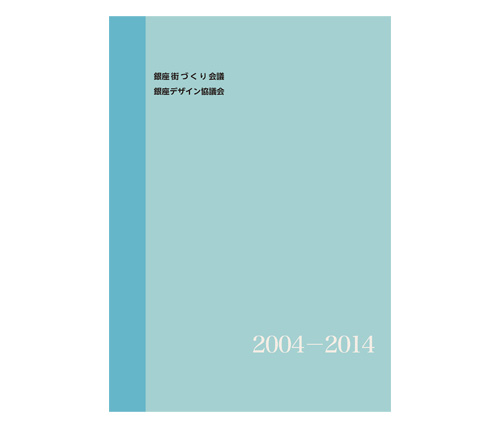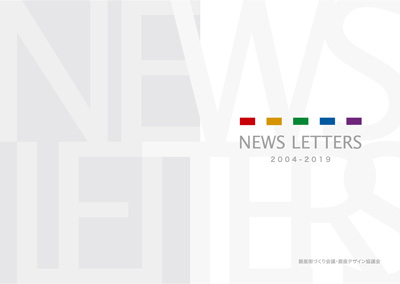Background and Purpose of Establishment

Since the Meiji era, Ginza has been cherished as a symbol of bustling entertainment districts and shopping streets nationwide. This is because, while honoring its long history and traditions, Ginza has always been forward‐looking—constantly innovating and disseminating information. Its unique development is the result of individual merchants who love their town, deeply value the sense of place forged by its history, and continuously reflect on “what makes Ginza unique.” In addition, various organizations such as street and neighborhood associations have long engaged in open discussions about the town’s future and challenges. These processes have collectively created what may be called the “Ginza Filter”—an invisible set of guidelines that has shaped Ginza’s distinctive streetscape.
In recent times, however, shifts in economic conditions, globalization, new approaches in urban and transportation planning that take the global environment into account, and changing lifestyle values have prompted a fresh examination of what truly constitutes “Ginza-ness.” Issues such as the renovation of Ginza-dori, traffic and parking challenges, and restrictions on advertising signage and sound have emerged—problems that an invisible filter alone cannot resolve.
Currently, Ginza is governed by a district plan known as the “Ginza Rules,” which sets limits on floor area ratios, building heights, and setbacks, among other things. There are also special rules related to parking. In response, in 2004 the Ginza Machidukuri Council was established with the aim of creating a shared vision for the future among those who have long done business in Ginza, residents, workers, new entrants, and visitors alike. The council later undertook the revision of the district plan “Ginza Rules” and, in 2006, launched the Ginza Design Council to promote a deliberative approach to town planning.
Objectives of the Ginza Machidukuri Council
- Serve as a single point of contact for various issues and new development plans affecting the urban environment of Ginza.
- Foster open discussions—both within and beyond Ginza—on the principles and practices of urban development.
- Envision the future of Ginza and formulate the Ginza Design Rules.
- Operate the Ginza Design Council in pursuit of a deliberative model of town planning.
- Propose innovative methods for urban development.
- Publicize the strengths of Ginza and promote its civic activities.
Organizational Structure
The Ginza Town Development Council currently functions as a forum for comprehensive and specific discussions on the future of Ginza. This includes addressing issues such as the design of public spaces and the revision of parking rules. Not only does it tackle major challenges facing the town, but it also discusses themes raised within the Ginza Design Council—sharing issues and solutions throughout the entire Ginza area.
Note on the Ginza Association
The Ginza Association is an organization that unites 34 groups—including district
associations, street associations, industry unions, and other voluntary organizations
—from across Ginza 1-chome to 8-chome. Although a voluntary body, it has a formal
charter and regularly holds executive meetings, regular sessions, and an annual
general meeting. Recognized by Chuo Ward as the highest decision-making body in
the Ginza area, the Association also plays a role in coordinating activities among the
many individual neighborhood and street associations active throughout Ginza.
Activities
Since its inception in 2004, the Ginza Town Development Council has organized numerous symposiums and study sessions. These gatherings have involved expert input and extensive hearing sessions to collect opinions from within Ginza. In consultation with Chuo Ward, the council revised the district plan “Ginza Rules” in 2006 and concurrently established the Ginza Design Council. Key activity areas include:
Examination of Issues in Ginza’s Urban Development
The district plan “Ginza Rules” and parking rules, which form the backbone of Ginza’s urban design, are seen not as finished products but as frameworks that continue to raise issues. Topics such as the optimal location for loading docks, the role and nurturing of cultural activities in Ginza, and the relationship between building uses (such as offices versus residences) and the district plan are all under active review. In addition, the council addresses various everyday challenges.
Operation of the Ginza Design Council
Since its establishment in November 2006, the Ginza Design Council has managed design consultations concerning new construction, façade treatments, and other public space concerns.
Enhancement of the Ginza Design Rules
Based on the two-year experience of the Ginza Design Council, the first edition of the “Ginza Design Rules” was published in 2008. These rules were updated in a second edition in 2011 and supplemented in 2015. In 2021 the third edition was issued, adopting a comprehensive perspective that goes beyond streetscape design to address broader urban challenges.
Symposiums and Study Sessions
The council organizes symposiums on topical issues and supports research on Ginza by students.
Support for Cultural Activities
Activities such as managing the “Ginza Room” at the Shiodome Hamarikyu Building and planning Kabuki performances for children are supported to help expand Ginza’s cultural offerings.
Examination of a Ginza Vision
Building on the legacy of G2020, a Ginza Vision Conference was launched in May 2022 to consider the future of the commercial heart of Ginza through diverse interactions.
Public Relations
Newsletters and responses to media inquiries help disseminate information about Ginza’s activities both within and beyond the area.
Support for the Community Building Activities by District and Street Association
The council assists these groups through study sessions and event support, helping to foster effective urban development initiatives.
Past Activities
Based on the future vision of Ginza described in “Ginza Machidukuri Vision”, the council has responded to each issue that Ginza faces by revising the district plan, establishing Ginza Design Council and publishing, and Ginza Design Rules, etc. On the occasions of 10the and 15th anniversaries of Ginza Machidukuri Council, the Council has published the booklets summarizing its past steps.

Ginza Machidukuri Council 2004-2014
• Format: A4 in color, 36 pages (in Japanese language only)
• Edited by: Ginza Machidukuri Council, Ginza Design Council
• Published by: Ginza Machidukuri Council
• Production supported by: Kojun-sha Foundation
• Date of Publication: July 11, 2014

NEWS LETTERS 2004-2019
• Format: A4 in color, 76 pages (in Japanese language only)
• Edited by: Ginza Machidukuri Council, Ginza Design Council
• Published by: Ginza Machidukuri Council
• Date of Publication: June 25, 2020
• Price: 1,000 yen (shipping charge will be added separately.)